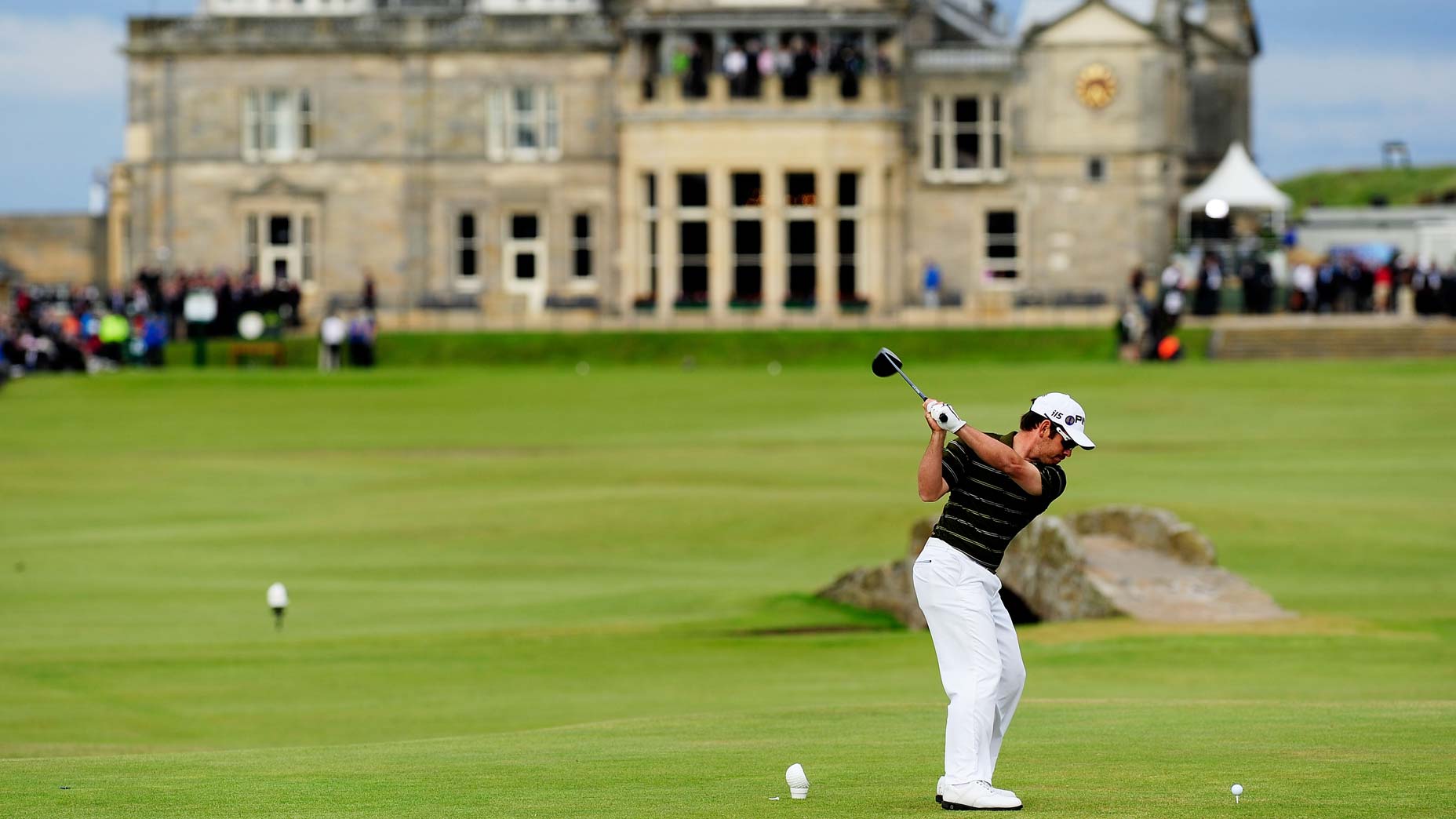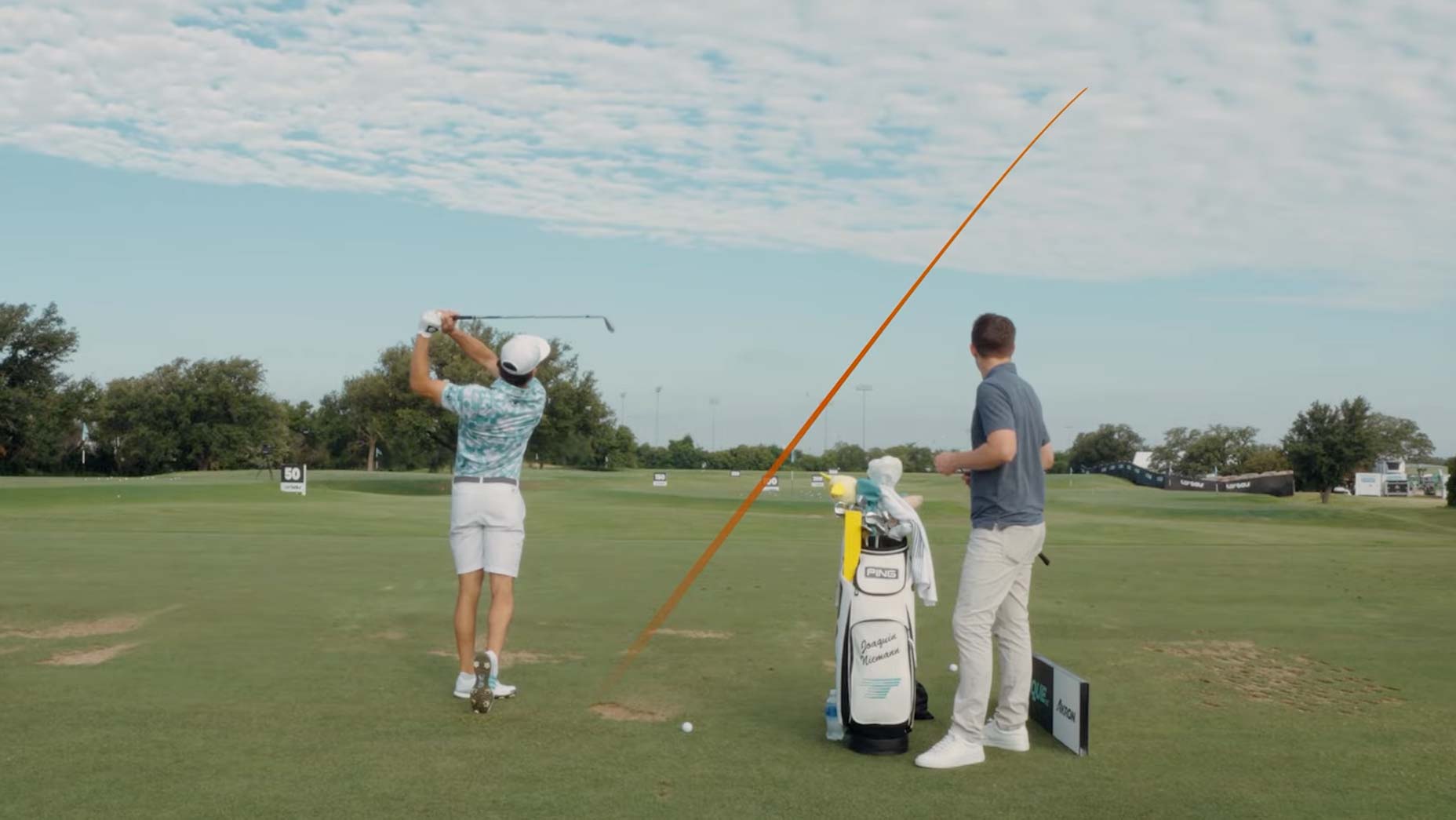Some golfers have swing coaches.
Wyndham Clark has a pair of alignment rods.
Confused? Let us explain.
Clark, as perhaps you know by now, is one of golf’s rising stars. After a few years of miring in the PGA Tour’s working class, Clark has burst onto the scene in a big way over the last 12 months, winning three times during that stretch, including his maiden major championship victory at the U.S. Open.
But Wyndham is also one of golf’s most unconventional players because unlike the majority of his pro golf counterparts, he doesn’t retain the services of a swing coach. This means the only maintenance that Clark does from week to week comes in the form of his own unique set of practice routines. And when it comes to Wyndham Clark’s practice routines, well, you wouldn’t be telling the story without a pair of alignment rods.
As Clark told GOLF’s Dylan Dethier in the newest episode of Warming Up, his game begins and ends with one peculiar swing drill called the “T-Drill.”
“I don’t have a swing coach,” Clark said, pointing at the alignment rods in the ground. “I work on it myself. This is my swing coach.”
In order to execute the drill, Clark explains, set your two alignment rods perpendicular to one another, forming a “T.” Now set your ball up in a neutral position just outside of the tee, and begin taking your typical practice swings. As you strike the ball, Clark says to pay attention to two key factors.
“I T it up every time for two reasons: for ball position and set up, so that I’m starting at neutral — and the other thing is to make sure I don’t get too steep,” he said. “I tend to be steep. And so under pressure, I start swinging really left, taking big divots, and hitting wipey cuts. And so what I’m trying to do here is neutralize that and be the opposite. So then when I get into competition, it’s where I want to be so I’ll start out here.”
The key of the drill, Clark says, is to overcorrect the swing plane, bringing him out of his natural out-to-in path and into the feel of an in-to-out swing. If Clark can hit draws during the practice sessions, he knows he’s flattened out his swing enough to be able to play the fade during the round with the type of control he prefers, eliminating that big right miss. And if he can’t hit draws, he can use the tee to examine his strike point and alignment to make sure that he can pinpoint the issue.
“I’m trying to be really, really shallow,” he says. “If I come out here and it seems like I’m hitting cuts or pulls or pushes, I go okay, is it ball position? Is it where you’re swinging? Where is the gap wedge in your stance?”
Clark says he’ll start the drill with his gap wedge and continue up through the set, hitting anywhere between “five to seven” clubs to get a baseline for his performance.
It’s a strange way to begin a warm-up, he says, but there’s no question that it’s been working. And for golfers who struggle with straightening out a consistent miss, Clark says the biggest fix can also be the simplest one.
Just grab a pair of alignment rods.










